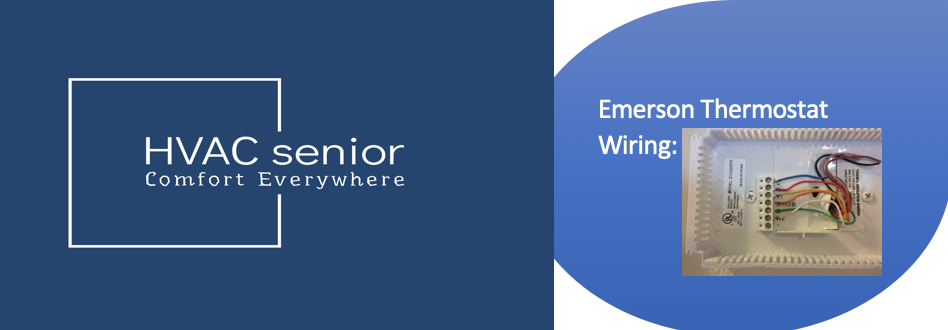When it comes to maximizing your home’s energy efficiency, few upgrades make as big of a difference as duct insulation. Properly insulating your air ducts helps maintain consistent temperatures, reduce energy loss, and improve indoor comfort. Whether you’re dealing with cold rooms in winter or hot air escaping in summer, adding insulation to your ducts can significantly improve your HVAC system’s performance.
What Is Duct Insulation?
Duct insulation involves wrapping or surrounding your HVAC ducts with insulation material so that heat loss or gain is prevented. Your ducts transport conditioned air from your furnace or air conditioner to the rest of the house. That air can lose as much as 30% of its energy while in transit — particularly if ducts pass through unconditioned areas such as attics, crawl spaces, or garages, without insulation.
By insulating your ducts, you minimize these losses and make your heating and cooling systems more efficient.
Why Do You Need Duct Insulation
Energy Efficiency
Insulated ducts keep the air at a stable temperature, and this means your HVAC system uses less energy. This means direct savings on your utility bills.
Better Comfort
Do you experience irregular heating or cooling in your home? Insulated ducts provide uniform airflow and temperature in every room.
Moisture Control
Insulation in ducts keeps condensation from occurring, which leads to mold, mildew, and corrosion of ductwork.
Noise Reduction
Insulated ducts also reduce the noise of air flow and vibration in your HVAC system.
Extended System Life
Since your HVAC system doesn’t have to work as hard, it has less wear and tear, and its life is extended.
Also read: Ductless Heat Pump
Where You Need Duct Insulation
You should insulate ducts that run through unconditioned or poorly insulated spaces, including:
- Attics
- Crawl spaces
- Garages
- Basements
- Exterior walls
If your ducts are already in conditioned spaces, insulation may not be necessary, but sealing leaks is still warranted for efficiency.
Types of Duct Insulation
The right duct insulation material is critical for performance and longevity. The most common include:
1. Fiberglass Duct Insulation
This is the most common type, made of fiberglass with an outer foil vapor barrier. It is flexible, low-cost, and has good thermal resistance (R-value of R-4 to R-8).
Pros:
- Easy to install
- Widely available
- Good sound absorption
Cons:
- Can irritate skin and lungs during installation
- Needs to be sealed tightly to prevent air leaks
2. Foam Board Insulation
Rigid foam boards (usually polystyrene or polyurethane) offer better insulation and durability. Ideal for ducts in tight or exposed areas.
Pros:
- High R-value per thin layers
- Moisture resistant
- Easy to cut and fit
Cons:
- More expensive than fiberglass
- Requires precise cutting and sealing
3. Reflective Foil Insulation
Also known as radiant barrier insulation, it reflects radiant heat rather than absorbing it. It’s best for hot climates where heat gain is the main issue.
Pros:
- Perfect for attics and hot areas
- Radiant heat transfer prevention
- Light and easy to install
Cons:
- Less effective in cold climates
- Requires an air space to be effective
4. Spray Foam Insulation
Closed-cell spray foam can be directly sprayed onto ducts for a high-performance, airtight seal. It’s ideal for unusual shapes or hard-to-reach places.
Pros:
- Air-sealing and insulating in a single step
- High R-value
- Durable
Cons:
- Must be installed professionally
- Higher cost
Also read: Attic Door Insulation
How to Install Duct Insulation (Step-by-Step Guide)
What follows is a step-by-step simplified guide for DIY duct insulation installation.
1. Inspect Your Ductwork
Pre-insulate, inspect for leaks, damage, or rust. Seal gaps with foil tape or mastic sealant. Insulating ducts without sealing leaks can entrap air and decrease efficiency.
2. Measure and Cut the Insulation
Measure your ducts’ length and circumference, then cut insulation to fit with extra overlap.
3. Wrap the Ducts
Wrap insulation snugly around all sections of ductwork. On fiberglass insulation, the foil face is outward. Overlap edges at least 1 inch.
4. Seal the Joints
Tighten all seams and joints with foil tape. Do not use ordinary duct tape, which will degrade over time.
5. Secure with Wire or Straps
On horizontal runs, support insulation with wire or nylon straps every 2–3 feet to prevent sagging.
Professional Duct Insulation Installation
It is possible to make insulating your ducts a do-it-yourself project, but there are a few benefits to having it done professionally:
- Correct R-value selection for your region
- Sealing of leaks properly
- Materials and labor time used efficiently
- Local building codes followed
A professional HVAC technician can also inspect whether your existing ducts need to be cleaned or replaced before insulating.
Also read: Air Conditioner Insulation
Best Practices for Duct Insulation
- Always seal air leaks before insulating.
- Choose insulation with at least an R-6 rating for unconditioned spaces.
- Don’t pack fiberglass insulation — it lowers R-value.
- Maintain clearance from heat sources.
- Inspect regularly for damage, moisture, or animal intrusion.
Signs You Need to Insulate or Reinsulate Your Ducts
- Rooms that never reach the right temperature
- Higher-than-normal energy bills
- Condensation on duct surfaces
- Air drafts in attics or crawl spaces
- Noisy ducts
If any of these apply, you may benefit from an upgrade to your duct insulation.
Benefits of Insulating Your Ductwork
| Benefit | Description |
| Lower Energy Bills | Minimizes heating and cooling losses through duct surfaces. |
| Consistent Room Temperatures | Keeps air evenly distributed throughout your home. |
| Longer HVAC Life | Reduces strain on the system by improving efficiency. |
| Quieter Operation | Dampens vibration and airflow noise. |
| Better Indoor Air Quality | Prevents condensation and mold growth. |
Common Mistakes to Avoid
- Using duct tape instead of foil tape
- Forgetting to seal leaks before insulating
- Compressing insulation too tightly
- Leaving gaps or exposed sections
- Ignoring return ducts, which also need insulation
Cost of Duct Insulation
The cost of duct insulation varies depending on the material and whether you do it yourself or professionally:
- DIY fiberglass wrap: $1–$2 per linear foot
- Professional installation: $5–$10 per linear foot
- Spray foam insulation: $8–$12 per linear foot
The cost is regained in the form of energy savings in a short while, typically within 1–2 years.
Maintaining Insulated Ducts
After installation, perform routine inspections to ensure:
- No pest or water damage
- Tape seals are not damaged
- No component has fallen or loosened
If you notice condensation or temperature variation, it is perhaps time to reseal or renew insulation.
Final Thoughts Concerning Duct Insulation
Duct insulation is one of the smartest investments you can make in your home’s comfort and efficiency. It prevents energy losses, indoor temperature stabilization, and causes your HVAC system to perform at its best throughout the year. Insulating your ducts, either by yourself or professionally, is a low-cost project with long-term dividends in the form of savings and comfort.









